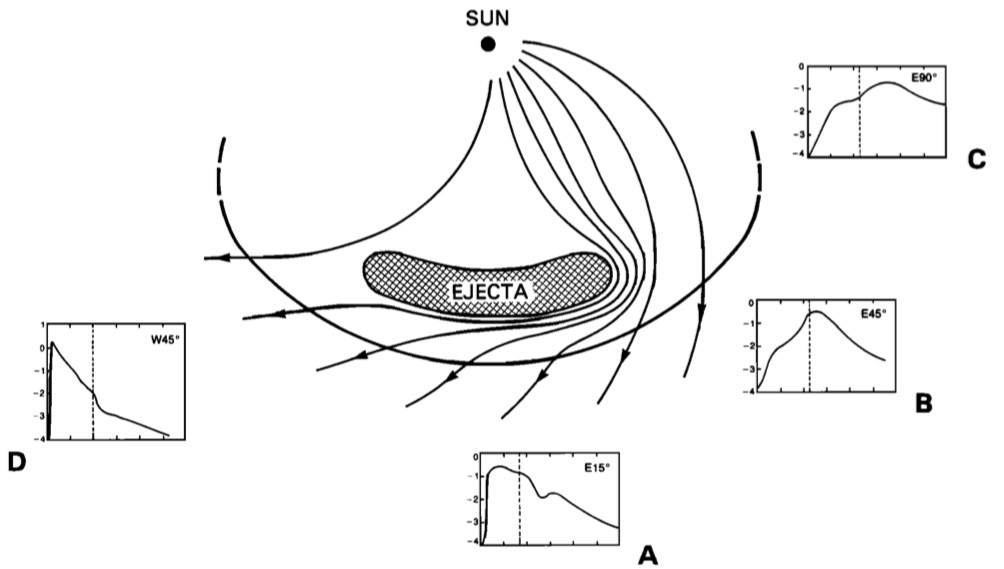
Cane, H. V., D. V. Reames, and T. T. von Rosenvinge, The role of interplanetary shocks in the longitude distribution of solar energetic particles, Journal of Geophysical Research, 93, 9555-9567 (1988) (ADS)

(click on the image for a larger version)
Date: 2007 June 28
Update: 2019 November 19
An immensely influential cartoon, which at a glance explains a great deal about the propagation of particles (SEPs) involved with a CME. The interplanetary shock front associated with the CME's motion was known from early geomagnetic records as a "storm sudden commencement"; a geomagnetic storm often begins with a very sharp impulse. Here the insets (A, B, C, D) show typical time profiles of SEP counts at different heliolongitudes, with the magnetically best-connected locations showing the prompt onset made possible by direct transport.
Theoretically, there are several ways in which a collisionless shock wave in a magnetized plasma can accelerate charged particles. One can actually see this in situ as a shock, then its driver CME, pass over an interplanetary space probe. Essentially this cartoon says that there is really no need for long-term coronal storage and release to explain the broad access of SEPs into the heliosphere! But despite this clarification, the propagation of high-energy particles near the Sun still remains quite mysterious.
Critically speaking, one would point to a certain lack of accuracy in dealing with the flanks of the shock, represented here as a simple arc. This does not offer us much fidelity about the quasi-perpendicular geometry shock geometry in the flanks that might be important. The Cartoonist feels that this is not much of an issue for SEPs, but the Archivist is quite interested in the new microwave imaging spectroscopy of CME progenitors in the low corona, from this point of view. Refer please to the improved version.